How to Help Clients Training for a Tough Mudder (Free Guide)
Acquiring the skills to train clients for a Tough Mudder can greatly expand your personal training services. However, it’s vital to have the appropriate tools and knowledge to guide these clients effectively. Certain features of personal training software can be of great assistance in this process. Find out how to guide clients training for a Tough Mudder and what tools you’ll need in this comprehensive guide.
- Assisting clients in Tough Mudder training necessitates a comprehensive approach that combines endurance workouts, strength and power training, agility drills, and teamwork exercises.
- Most Tough Mudder training clients will require a versatile training plan that prepares them for a series of physical challenges requiring strength, stamina, and team coordination.
- The use of workout and assessment software can aid in monitoring progress, scheduling diverse workouts, and maintaining a balanced training plan, ensuring your clients reach their Tough Mudder goals safely and effectively.
Helping clients prepare for a Tough Mudder can offer personal trainers a rewarding way to significantly influence their clients’ fitness journeys.
To assist clients training for a Tough Mudder effectively, you need not only an understanding of the demands of such a race but also the right tools to track progress and modify training plans; that’s where personal training software steps in. By taking advantage of the features that the best personal trainer business software offers, you can guide clients in their Tough Mudder training in a way that boosts their performance and minimizes injury risk.
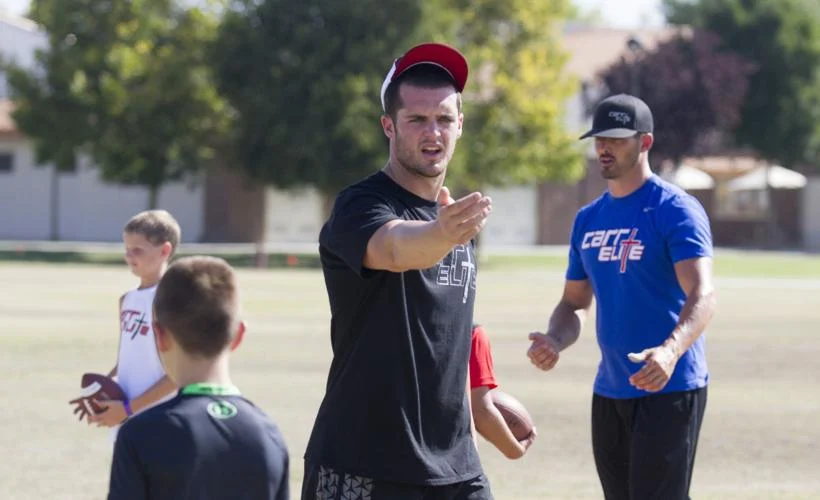
Experience the leading personal training software from Exercise.com by booking a demo today!
The Benefits of Training for a Tough Mudder
Training for a Tough Mudder event is not for the faint-hearted. It requires dedication, determination, and a willingness to push oneself to the limits. As a fitness professional, it is your role to guide and support your clients through this challenging journey. In this article, we will explore various aspects of training for a Tough Mudder, including the benefits of such training, understanding the Tough Mudder challenge, assessing clients’ fitness levels, creating a training plan, and incorporating strength and cardiovascular training. We will also delve into the importance of nutrition, hydration, injury prevention and recovery techniques, mental preparation, group training ideas, and strategies to overcome common obstacles encountered during a Tough Mudder race. Let’s dive in!
Training for a Tough Mudder event offers numerous physical and mental benefits. Firstly, it is a great way to challenge oneself and step out of the comfort zone. The obstacles in a Tough Mudder course test participants’ strength, endurance, agility, and mental toughness. By conquering these challenges, clients can gain a tremendous sense of accomplishment and confidence.
In addition to the mental benefits, Tough Mudder training also leads to significant improvements in physical fitness. The variety of obstacles requires participants to have a well-rounded fitness level, including cardiovascular endurance, strength, agility, and core stability. Training for these specific requirements helps to improve overall fitness and functional strength.
Tough Mudder training also provides an opportunity for individuals to bond and connect with others who are pursuing similar goals. The team-oriented nature of these events creates a sense of camaraderie and support, which can be a powerful motivating factor for clients.
Furthermore, training for a Tough Mudder event can have a positive impact on mental resilience. The intense physical challenges and demanding obstacles push participants to their limits, requiring them to develop mental toughness and perseverance. This mental resilience can then be applied to other areas of life, helping individuals overcome obstacles and face challenges with a stronger mindset.
Lastly, participating in a Tough Mudder event can be a great way to set and achieve personal goals. Whether it’s completing the course within a certain time frame or conquering a particularly difficult obstacle, the event provides a tangible target to work towards. This goal-setting aspect can be highly motivating and can inspire individuals to push themselves further in their training and in other areas of life.
Read More:
- How to Help Clients Training for an Obstacle Course Race
- How to Help Clients Training for a Trail Race
- How to Help Clients Training for a Spartan Race
Understanding the Tough Mudder Challenge
Before embarking on a Tough Mudder training program, it is crucial to have a clear understanding of the challenge that lies ahead. Tough Mudder events are obstacle courses designed to test participants’ physical and mental strength. They typically cover a distance of 10-12 miles and feature various obstacles such as mud pits, climbing walls, monkey bars, and electric shocks.
It is important to educate clients about the specific obstacles they will encounter during the event, as well as the physical and mental demands involved. This knowledge will help them prepare mentally and set appropriate training goals.
Assessing Clients’ Fitness Levels for Tough Mudder Training
Before designing a training plan, it is crucial to assess your clients’ current fitness levels. This assessment will help you determine the starting point and identify any areas of weakness that need to be addressed. Consider conducting a comprehensive fitness assessment that evaluates cardiovascular endurance, strength, flexibility, and agility.
Once you have gathered the necessary information, you can customize the training program to meet the specific needs and goals of each client. Tailoring the program ensures that clients progress at a safe and appropriate level, minimizing the risk of injury and maximizing results.
Creating a Training Plan for Tough Mudder Success
Designing a comprehensive training plan is key to helping clients achieve success in a Tough Mudder event. The plan should incorporate a balanced mix of cardiovascular endurance training, strength training, agility work, and obstacle-specific training.
Begin by establishing a schedule for training sessions, taking into consideration the time available and the client’s other commitments. Aim for a gradual progression in intensity and duration of workouts, allowing time for recovery and adaptation.
Incorporate a variety of training methods to keep clients engaged and prevent plateauing. This can include interval training, circuit training, functional training, and outdoor workouts to simulate race conditions.
Incorporating Strength Training into Tough Mudder Workouts
Strength training is a vital component of Tough Mudder preparation, as it helps build the necessary muscular strength and endurance to overcome the challenging obstacles. Include both compound exercises, such as squats, deadlifts, and push-ups, as well as functional exercises that mimic the movements required in specific obstacles.
Focus on developing overall body strength, with particular emphasis on the upper body, core, and lower body. Incorporate exercises that target these areas individually and as integrated movements. Emphasize proper form and technique to maximize results and prevent injury.
The Importance of Cardiovascular Endurance for Tough Mudder Training
Cardiovascular endurance is essential for completing a Tough Mudder event, as participants are required to maintain a steady level of effort over a long distance. Incorporate cardiovascular workouts that build endurance, such as running, cycling, swimming, or HIIT (High-Intensity Interval Training).
Vary the intensity and duration of cardiovascular workouts to simulate the demands of a Tough Mudder race. Include longer, steady-state sessions to build aerobic endurance, as well as shorter, high-intensity intervals to improve anaerobic capacity.
Building Upper Body Strength for Tough Mudder Obstacles
Many Tough Mudder obstacles require significant upper body strength, such as rope climbs and monkey bars. To prepare clients for these challenges, incorporate exercises that target the back, shoulders, and arms.
Exercises like pull-ups, rows, and shoulder presses are effective for building upper body strength. Gradually increase the difficulty by adding resistance or progressing to more challenging variations of these exercises.
Developing Lower Body Power and Agility for Tough Mudder Challenges
The lower body plays a crucial role in navigating obstacles and maintaining balance and stability during a Tough Mudder event. Include exercises that target the legs, hips, and glutes to develop lower body power and agility.
Squats, lunges, jumps, and agility ladder drills are all effective exercises for developing lower body strength, power, and speed. Incorporate unilateral exercises to address any muscle imbalances and enhance stability.
Enhancing Core Stability and Balance for Tough Mudder Success
Core stability and balance are essential for navigating obstacles and maintaining optimal body control. Include exercises that target the core muscles, such as planks, Russian twists, and stability ball exercises.
Incorporate balance and stability training into workouts by using equipment like Bosu balls or performing exercises on unstable surfaces. This will help improve proprioception and body awareness, reducing the risk of injury during the event.
Nutrition Tips to Fuel Clients’ Tough Mudder Training
Proper nutrition plays a vital role in fueling performance and optimizing recovery during Tough Mudder training. Encourage clients to consume a balanced diet with an adequate intake of macronutrients (carbohydrates, protein, and fat) to support their energy needs and muscle repair.
Emphasize the importance of hydration and encourage clients to drink enough water throughout the day. Educate them on the significance of pre- and post-workout nutrition, incorporating quality carbohydrates and protein in their meals or snacks to optimize energy levels and facilitate recovery.
Hydration Strategies for Optimal Performance in a Tough Mudder Event
Staying hydrated is critical during a Tough Mudder race to maintain performance, prevent cramping, and regulate body temperature. Instruct clients to hydrate adequately in the days leading up to the event, as well as during the race.
Advise clients to drink water or sports drinks at regular intervals during the event, taking into account environmental conditions and sweat rate. Encourage them to use electrolyte supplements as needed and to be mindful of signs of dehydration or over-hydration.
Injury Prevention and Recovery Techniques for Tough Mudder Training
Tough Mudder training can be physically demanding and increase the risk of injury. Implement injury prevention strategies to minimize the likelihood of injuries and ensure clients can sustain their training without setbacks.
Include a dynamic warm-up routine before each training session to prepare the body for the demands ahead. Incorporate proper foam rolling and stretching exercises to improve flexibility and reduce muscle imbalances.
Teach clients self-myofascial release techniques to address any tight or overactive muscles. Encourage them to practice proper post-workout recovery, including rest, adequate sleep, and nutrition to promote muscle repair and prevent overtraining.
Mental Preparation and Motivation for Clients Undertaking a Tough Mudder
Training for a Tough Mudder event requires not only physical but also mental toughness. Help your clients develop a mindset that fosters determination, resilience, and positive self-talk.
Encourage visualization exercises, where clients visualize themselves successfully completing the event and overcoming obstacles. Discuss techniques for managing pre-race nerves and anxiety, such as deep breathing and positive affirmations.
Empower clients by highlighting their progress and acknowledging their efforts. Provide ongoing support and motivation throughout the training process, reminding them of their goals and the reasons behind their desire to complete a Tough Mudder event.
Group Training Ideas to Prepare Clients for the Team-Oriented Nature of a Tough Mudder Event
Tough Mudder events emphasize teamwork and camaraderie. Incorporate group training sessions to simulate the team-oriented nature of these events and encourage clients to work together.
Design workouts that include partner exercises, relay races, or team challenges. This promotes collaboration, communication, and support among participants, fostering a sense of unity and shared accomplishment.
Overcoming Common Obstacles Encountered in a Tough Mudder Race
Tough Mudder races are known for their challenging obstacles that test participants’ strength, agility, and mental fortitude. Prepare clients for these obstacles by breaking down the techniques required to overcome them.
Take the time to explain and demonstrate obstacle-specific strategies. For example, teach proper rope climbing techniques, the hand-foot sequencing technique for monkey bars, and efficient crawling techniques for mud pits. Regularly practice these techniques during training sessions to build confidence and proficiency.
Tips for Mastering the Water Obstacles in a Tough Mudder Course
Water obstacles are a common feature of Tough Mudder events, requiring participants to navigate through water bodies such as rivers, ponds, or ditches. Advise clients to wear appropriate swimwear and footwear that can handle water immersion.
To prepare for water obstacles, include swimming or treading water exercises in training sessions. Practice submerging and resurfacing techniques, as well as techniques to combat cold water exposure, ensuring clients are confident and capable during the race.
Strategies to Conquer the Rope Climbs and Monkey Bars in a Tough Mudder Challenge
Rope climbs and monkey bars are notorious for testing upper body strength and grip endurance. Help clients conquer these obstacles by gradually introducing them to exercises that specifically target these areas.
Begin with assisted variations, such as using resistance bands or having a spotter, and gradually decrease assistance as clients gain strength. Incorporate exercises that strengthen the fingers and forearms, such as wrist curls, forearm planks, and grip trainers.
Tackling the Mud Pits and Crawling Obstacles with Confidence in a Tough Mudder Event
Mud pits and crawling obstacles require participants to navigate through low spaces and uneven terrain. Encourage clients to practice army crawls, bear crawls, and crab walks to improve their crawling techniques and adaptability to challenging surfaces.
It is essential to prepare clients mentally for these obstacles, as they may encounter cramped and claustrophobic conditions in mud tunnels or crawl spaces. Emphasize the importance of staying calm, focusing on breathing, and using alternative techniques to overcome anxiety if needed.
Preparing Clients Mentally and Physically for the Electric Shock Challenges in a Tough Mudder
The electric shock challenge is one of the most mentally and physically daunting obstacles in a Tough Mudder event. Prepare clients by explaining the nature of the challenge and how they can mentally and physically approach it.
Encourage clients to wear appropriate clothing and footwear to minimize the risk of injury. In training sessions, simulate the challenge by using conductive materials (such as hanging ropes with small electrical pulses) to help clients adjust to the sensation and become mentally prepared.
Discuss mindset strategies, such as visualization and positive self-talk, to help clients face the challenge with confidence and determination.
Training clients for a Tough Mudder event requires thorough preparation in various areas. By addressing the physical, mental, and nutritional aspects, and incorporating a well-rounded training plan, you can help clients achieve their goals and conquer the challenges that lie ahead. Keep emphasizing the importance of perseverance, teamwork, and enjoyment throughout the training process. With your guidance and support, your clients will be well-equipped to take on the Tough Mudder challenge and emerge stronger than ever.
What is the best way to train for a Tough Mudder?
The best way to train for a Tough Mudder is to focus on a combination of cardiovascular endurance, strength training, and functional exercises. Incorporate running or jogging, interval training, and longer distance runs to build endurance. Additionally, include strength exercises that target the whole body, such as burpees, push-ups, pull-ups, and squats, to prepare for the obstacles and challenges of a Tough Mudder.
What exercises should you do to train for a Tough Mudder?
To train for a Tough Mudder, incorporate exercises that improve cardiovascular fitness, strength, and functional movements. Include running or jogging, interval training, circuit workouts, bodyweight exercises, and agility drills. Additionally, practice specific obstacle skills and movements, such as climbing, crawling, carrying objects, and navigating uneven terrain.
What skills do you need for a Tough Mudder?
Skills required for a Tough Mudder include cardiovascular endurance, muscular strength and endurance, agility, coordination, balance, and mental resilience. The ability to overcome obstacles, climb walls, crawl through mud, carry heavy objects, and navigate challenging terrain are all beneficial skills to have for a successful Tough Mudder experience.
What should you be able to do before Tough Mudder?
Before participating in a Tough Mudder, it’s recommended to have a base level of fitness and be able to run or jog continuously for several miles. Additionally, having strength and endurance to perform bodyweight exercises, climb over walls, crawl under obstacles, and navigate uneven terrain will enhance your ability to complete the event.
Can an average person do a Tough Mudder?
Yes, an average person can participate in and complete a Tough Mudder. Tough Mudder offers a range of race options, including shorter distances and less challenging obstacles, to accommodate different fitness levels and abilities. With proper training, preparation, and determination, individuals of varying fitness levels can participate in and enjoy the Tough Mudder experience.
How long do you need to train for a Tough Mudder?
The duration of training for a Tough Mudder can vary depending on an individual’s current fitness level, goals, and race distance. It’s recommended to allow at least 8 to 12 weeks of structured training to gradually build cardiovascular endurance, strength, and improve obstacle-specific skills. However, the duration can be adjusted based on personal fitness levels and training background.
How challenging is Tough Mudder?
Tough Mudder is known for its challenging nature, both physically and mentally. It combines long-distance running with a variety of obstacles and challenging terrains. The difficulty level can vary depending on the race distance and location. While it is challenging, participants often find it a rewarding and empowering experience.
What is the success rate of Tough Mudder?
The success rate of Tough Mudder can vary depending on factors such as the race distance, location, and individual fitness levels. Success is measured by completing the course and overcoming the obstacles. While not every participant may complete every obstacle, the majority of participants are able to finish the race by attempting the obstacles or completing the penalty options provided.
What’s harder than Tough Mudder?
Some events that are often considered harder or more challenging than Tough Mudder include races like the Spartan Ultra Beast, the World’s Toughest Mudder, or extreme endurance events like ultramarathons or multi-day adventure races. These events typically involve longer distances, more demanding obstacles, and harsher environmental conditions.
How many miles do you run in a Tough Mudder?
The distance of a Tough Mudder can vary depending on the specific race location and format. A typical Tough Mudder race can range from 8 to 10 miles, but there are also shorter options available, such as the Tough Mudder Half, which covers around 5 miles. The specific distance can vary, so it’s best to check the event details for the race you plan to participate in.
Why do people do Tough Mudder?
People participate in Tough Mudder for various reasons, including personal challenge, pushing their physical and mental limits, teamwork, camaraderie, and a sense of accomplishment. Tough Mudder events provide a unique and exciting experience that combines physical fitness, overcoming obstacles, and a supportive community atmosphere.
Do you get shocked in Tough Mudder?
In certain Tough Mudder events, such as the “Electric Shock Therapy” obstacle, participants may encounter mild electrical shocks while navigating through hanging wires. However, the shocks are typically low voltage and not harmful, more of a surprising jolt than a painful experience. Participants have the option to bypass this obstacle if they choose not to participate.
Can you skip obstacles in a Tough Mudder?
Yes, participants have the option to skip obstacles they feel uncomfortable with or are unable to complete. Tough Mudder emphasizes personal challenge and teamwork, and there is no penalty for bypassing an obstacle. However, many participants embrace the challenge and strive to complete all the obstacles to fully experience the Tough Mudder event.
What should I eat during Tough Mudder?
During a Tough Mudder event, it’s important to stay hydrated and consume foods that provide sustained energy. Focus on consuming a balanced meal before the race that includes carbohydrates for fuel, protein for muscle recovery, and healthy fats. During the event, hydrate regularly with water and electrolyte-rich beverages, and consider consuming easily digestible snacks such as energy bars, bananas, or sports gels to maintain energy levels throughout the race.
Is it better to wear shorts or leggings for a Tough Mudder?
The choice between wearing shorts or leggings during a Tough Mudder depends on personal preference and the race conditions. Both options have their advantages. Shorts allow for better airflow and may dry faster when wet, while leggings provide more coverage and protection from scratches or abrasions on rough terrain. Choose comfortable, moisture-wicking materials that will allow freedom of movement and consider the weather and obstacles you will encounter during the race.
Can you do a Tough Mudder out of shape?
While it is possible to participate in a Tough Mudder event without being in peak physical shape, having a base level of fitness is recommended to enhance the overall experience. Tough Mudder events can be physically demanding, and being in better shape can improve your ability to navigate obstacles, complete the course, and reduce the risk of injury. Proper training and preparation can help individuals of varying fitness levels participate and enjoy the Tough Mudder challenge.
Is CrossFit good training for a Tough Mudder?
CrossFit can be a beneficial training method for preparing for a Tough Mudder, as it incorporates functional movements, strength training, cardiovascular endurance, and high-intensity workouts. The variety of exercises and workouts in CrossFit can help improve overall fitness, strength, and endurance, which are valuable for completing the obstacles and challenges of a Tough Mudder. However, it’s important to supplement CrossFit training with specific obstacle practice and running to ensure you are fully prepared for the race.
Read More: Best CrossFit Box Management Software
Use the Best Personal Training Software to Offer a Stellar Client Experience
Training clients for a Tough Mudder race requires a comprehensive and tailored approach. See how Exercise.com can help.

To learn more about how Exercise.com can help you run your fitness business, book a demo now!
Creating Training Plans for Clients Who Want to Compete in a Tough Mudder
Here’s how you can help your clients accomplish their goals by using workout plan creator software to create workout plans, run fitness challenges, offer online workout groups, message clients, and more, all from your very own custom branded fitness apps.
Exercise.com stands out as an all-in-one fitness business management software with comprehensive workout plan sales capabilities. The robust member management, billing & invoicing, and unique fitness assessment tools offer a one-stop solution for fitness business needs. Here’s just some of what you can do with the Exercise.com platform:
Engage with clients via automations.
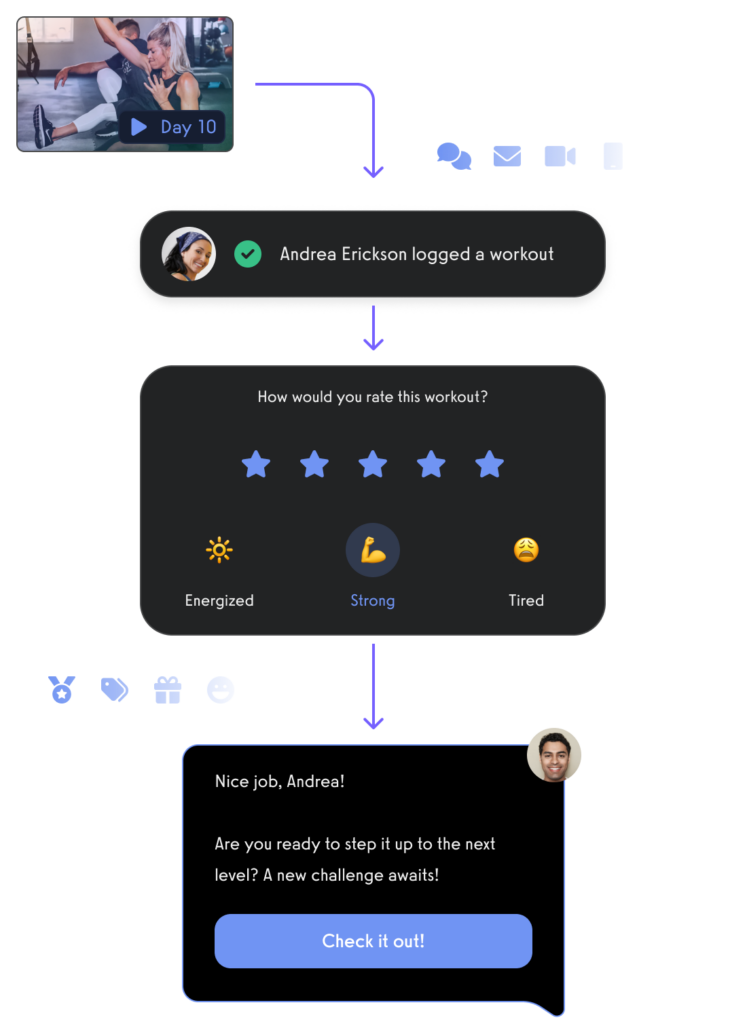
Manage leads with a fitness CRM. Read More: Best CRM Software for Gyms
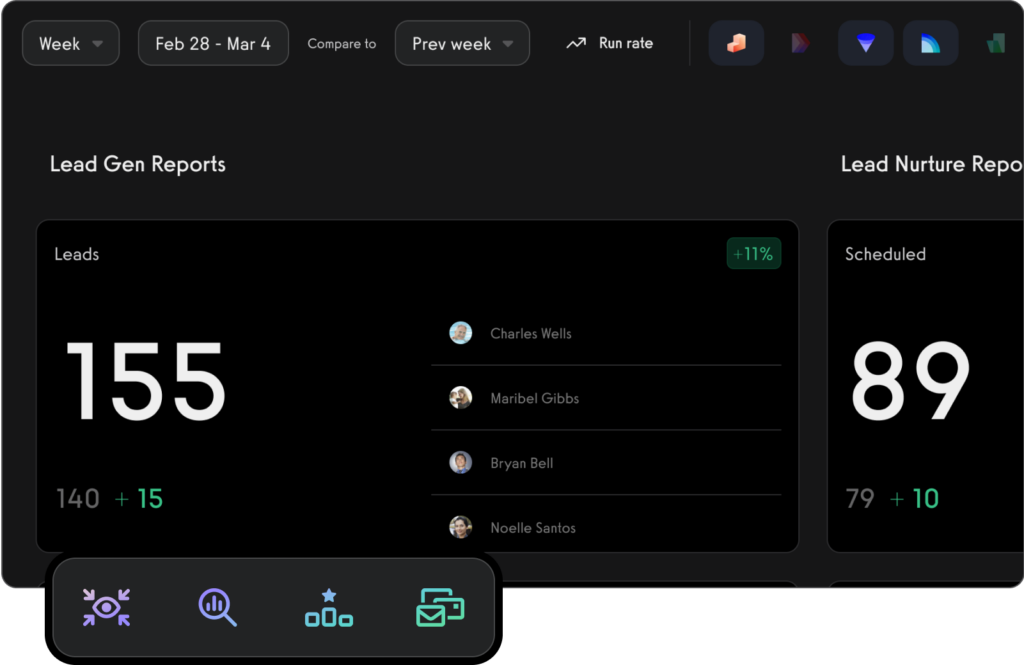
Create and send fitness assessments with ease.
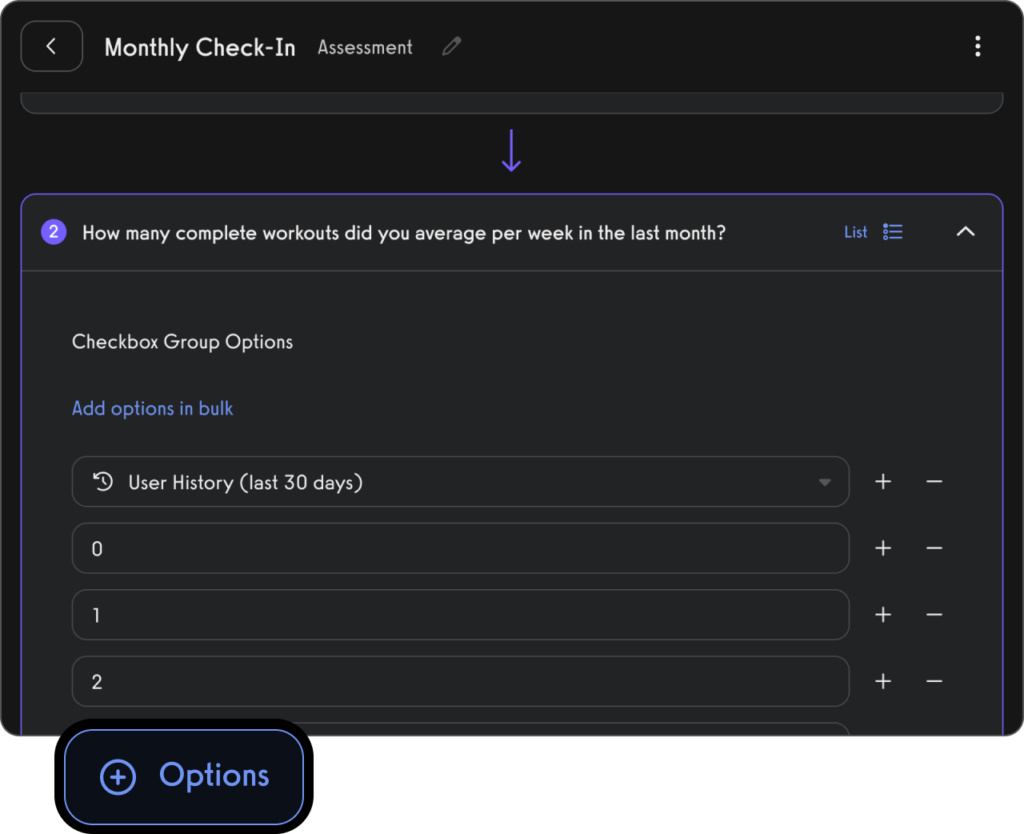
Use fitness habit tracking to inspire and motivate personal training clients (in-person and remote).

Use fitness progress photos to engage with clients.
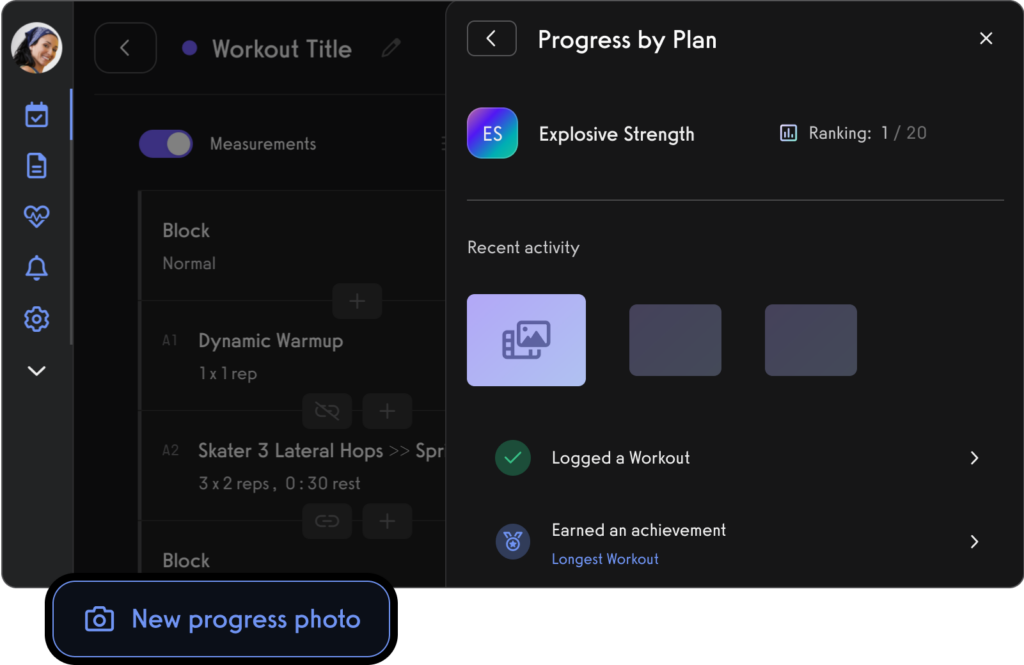
Use fitness leaderboards to track performance and inspire healthy competition.
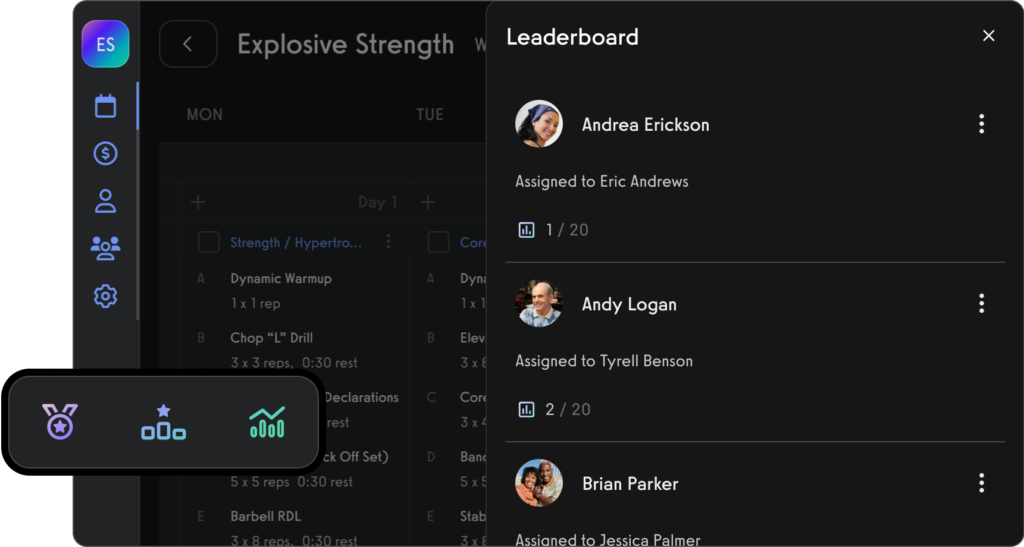
Use the exercise demonstration video library or create your own custom exercise demonstration videos.
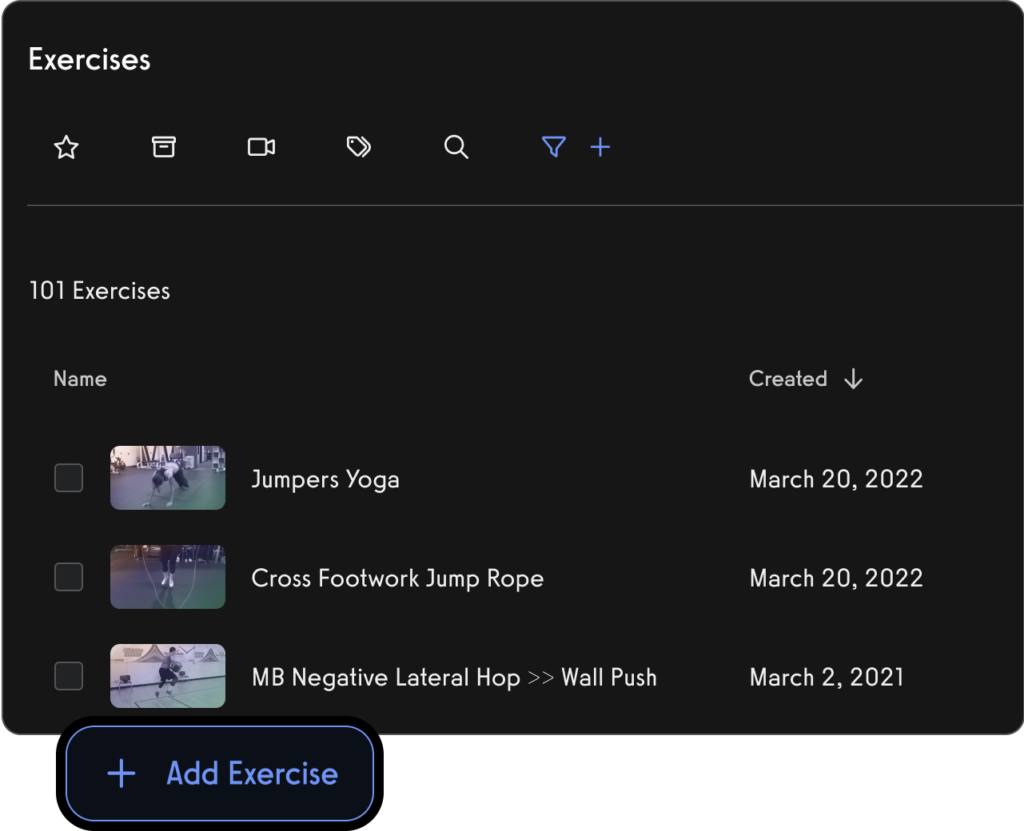
Create workout plans for parents and dependents, teams and more.

Manage personal training clients with ease.
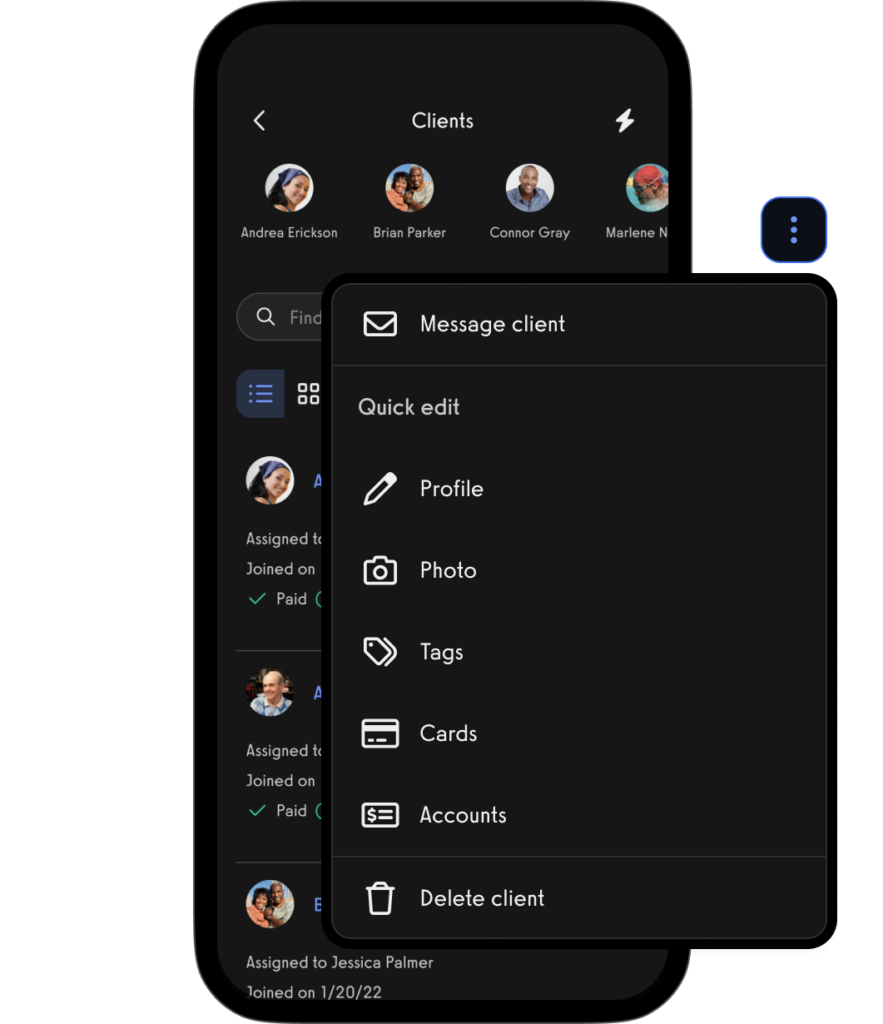
Book appointments for clients (Read More: Best Gym Booking Software)

Create classes and fitness groups

Manage fitness challenges (Read More: 100+ Fitness Challenge Ideas)
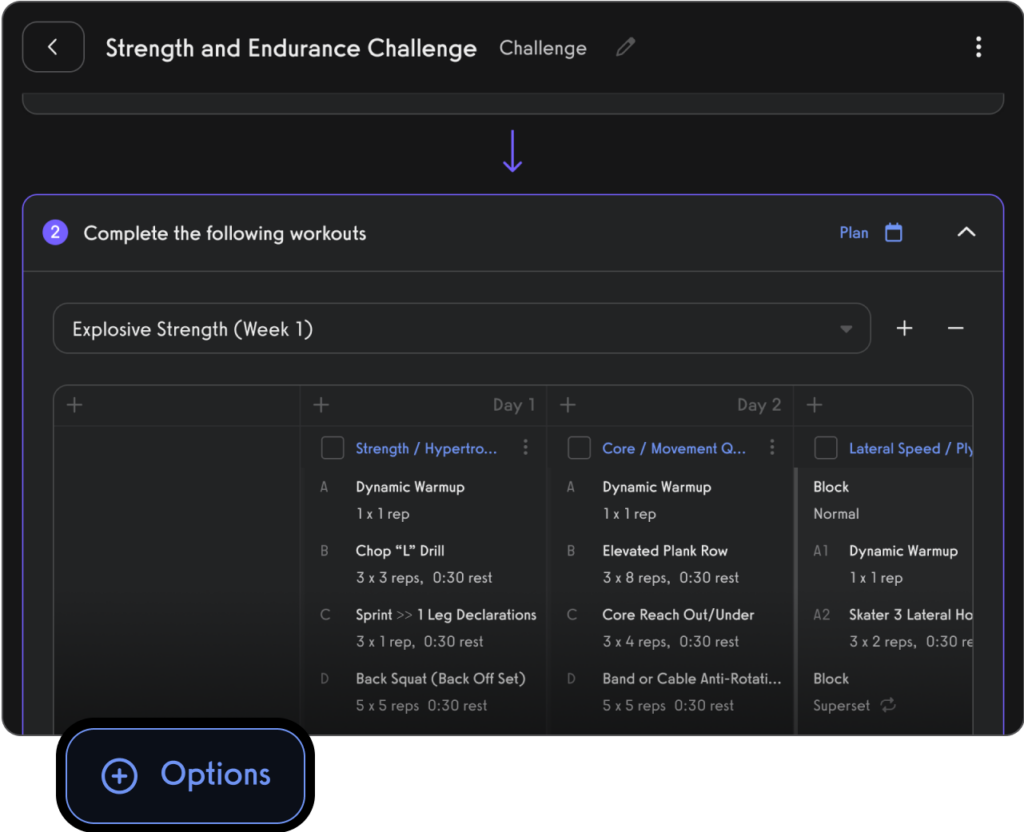
Process payments for open gym, classes, and personal training.

Communicate with gym members, athletes, team members, personal training clients, class members, parents, and dependents via SMS, email, and in-app push notification.
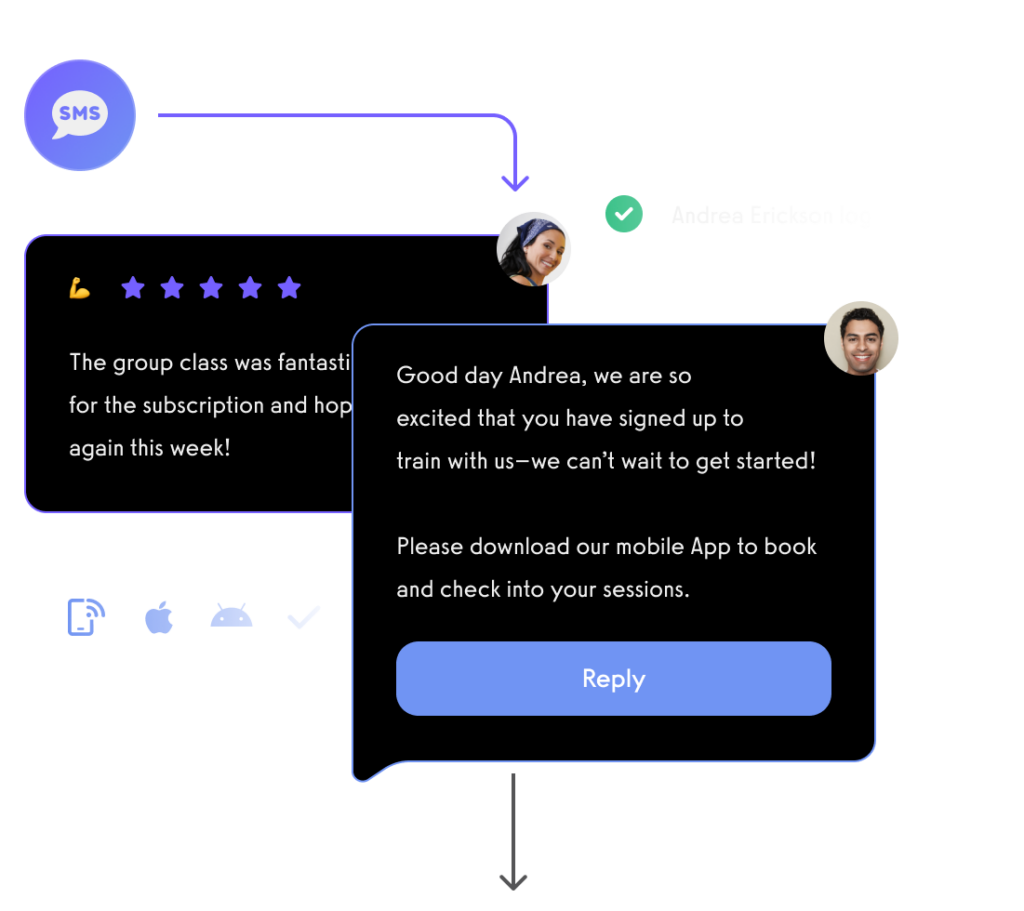
View performance over time, track personal records, and other fitness stats with performance reporting dashboards.

And of course, view all of your fitness business reports easily too.
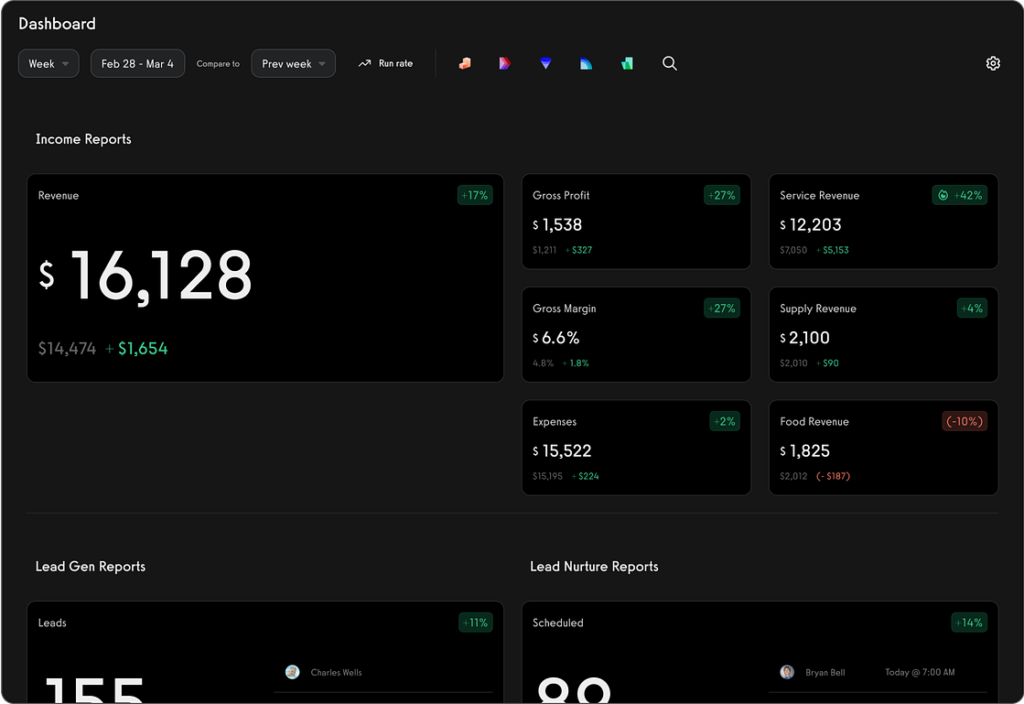
All from your custom-branded fitness apps (Read More: Best Gym Mobile Fitness Apps Software)

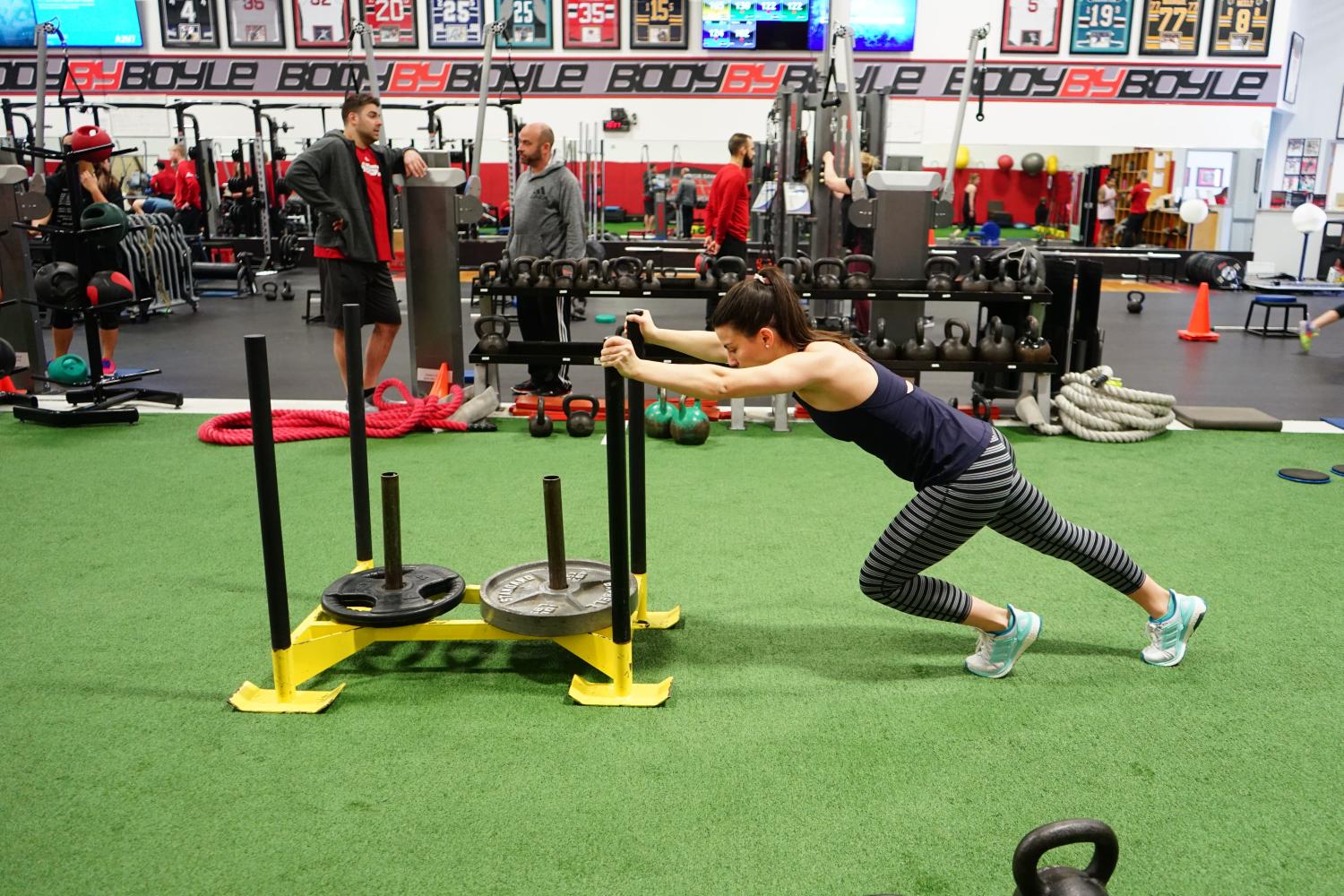
Want to learn how your fitness business can take it to the next level? Get a demo now!









